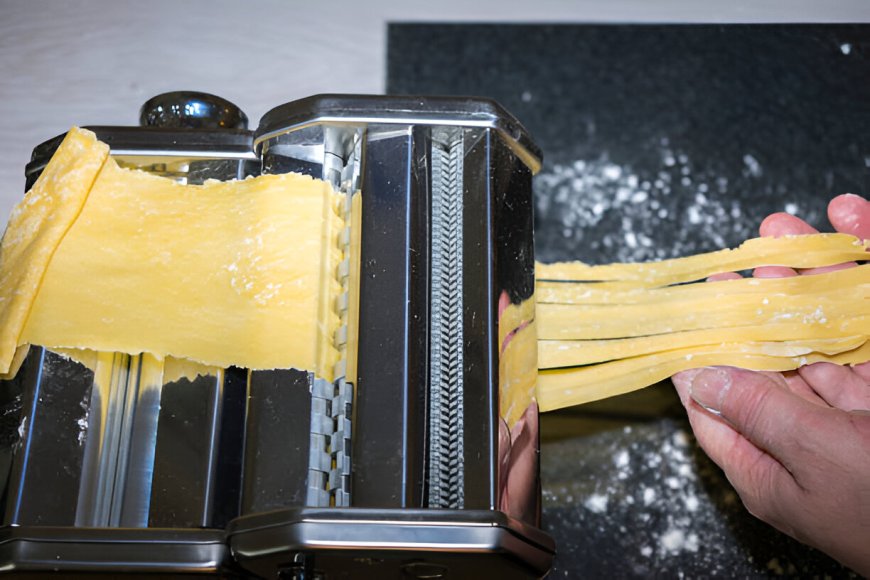The Ultimate Guide to Making Perfect Pasta Every Time

Pasta is one of the most beloved comfort foods around the world. It's simple, versatile, and delicious—but getting it just right? That takes a little know-how. Whether you're a kitchen rookie or a seasoned home cook, perfecting your pasta game can turn an ordinary meal into a restaurant-worthy dish.
Here’s your ultimate guide to making perfect pasta every time—from boiling basics to flavor-enhancing secrets.
Choose the Right Type of Pasta
Different sauces call for different pasta shapes. Choosing the right one makes a big difference in taste and texture.
-
Long pasta (spaghetti, linguine, fettuccine) pairs well with light, smooth sauces.
-
Short pasta (penne, rigatoni, farfalle) is great for hearty, chunky sauces.
-
Stuffed pasta (ravioli, tortellini) shines with simple sauces like brown butter or light cream.
-
Fresh vs. Dried: Fresh pasta is softer and cooks faster; dried pasta has a firmer bite and longer shelf life.
Use Plenty of Water
Always cook pasta in a large pot of boiling water. The general rule is 4–6 quarts of water per pound of pasta. More water prevents sticking and ensures even cooking.
Bring the water to a rolling boil before adding the pasta—never start with warm or simmering water.
Salt the Water Like the Sea
This is one of the most common (and crucial) tips: salt your pasta water generously. It’s the only chance to flavor the pasta itself.
Add about 1–2 tablespoons of salt per gallon of water. Don't worry—most of it stays in the water, not in your noodles.
Stir Early and Often
After adding pasta to the water, stir immediately to prevent clumping. Stir occasionally throughout the cooking process to keep everything moving and separate.
Don’t Overcook It
Pasta should be cooked al dente, which means “to the tooth” in Italian—firm to the bite, not mushy.
Check the package instructions and taste a piece a minute or two before the suggested time. Drain immediately once it’s ready.
Save Some Pasta Water
Before draining, reserve a cup of pasta water. This starchy liquid is perfect for emulsifying sauces and helping them cling to the noodles.
Adding a splash of pasta water to your sauce can make it silkier, creamier, and more flavorful.
Don’t Rinse After Draining
Unless you’re making a cold pasta salad, never rinse pasta after cooking. The starch on the surface helps sauces stick better. Rinsing washes away flavor and texture.
Toss It in the Sauce
Rather than just pouring sauce over pasta, combine pasta and sauce in a pan and toss them together over medium heat. This allows the flavors to meld and coats every strand or piece evenly.
This step is key to elevating your pasta from homemade to gourmet.
Enhance with Simple Finishing Touches
A few finishing touches can take your dish to the next level:
-
A drizzle of extra virgin olive oil
-
A sprinkle of freshly grated Parmesan or Pecorino
-
A handful of fresh herbs like basil or parsley
-
A pinch of crushed red pepper or lemon zest for brightness
Bonus Tips for Next-Level Pasta
-
Fresh garlic and sautéed onions add depth to any sauce.
-
Use high-quality ingredients—especially olive oil, cheese, and tomatoes.
-
Don’t overload the dish—keep it balanced and let the pasta shine.
-
For fresh pasta, boil for only 2–3 minutes and check early. It cooks much faster than dried pasta.
Final Thoughts
Perfect pasta isn’t about complex techniques—it’s about paying attention to details and cooking with intention. With this guide in hand, you’ll be equipped to make pasta that’s flavorful, perfectly textured, and crowd-pleasing every single time.
So grab your pot, salt that water, and start boiling—you’re about to become everyone’s favorite pasta chef.







